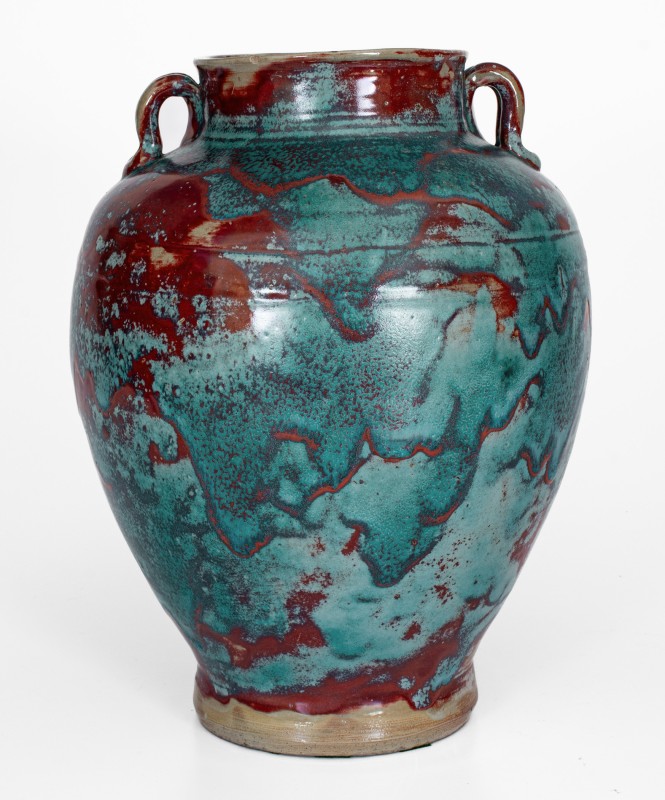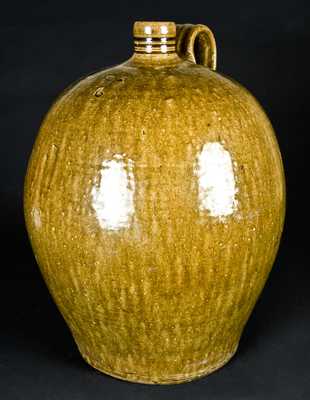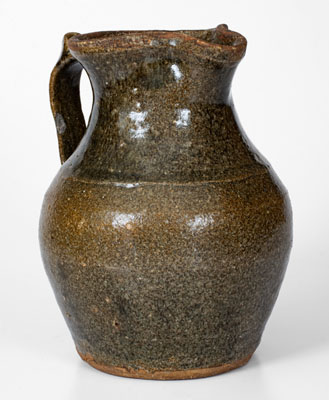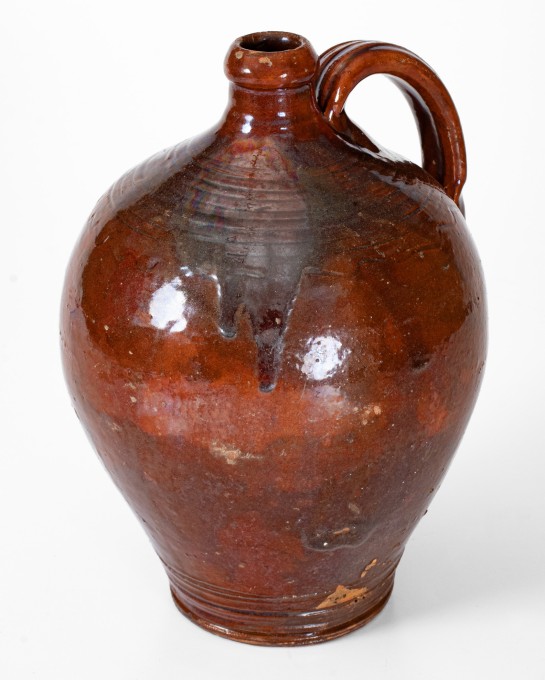Extremely Rare Glazed Redware Jar, Inscribed "Henry Watkins / 1852," Guilford or Randolph County, North Carolina origin, 1852, squat-shaped, ovoid jar with thin flaring rim, wide strap handles with depressed terminals, and incised sine wave decoration to shoulder, the surface covered in a streaky, colorful lead-and-manganese glaze. Underside incised in very large script "Henry Watkins / 1852". Featuring an excellent form with delicate potting, this jar is one of only a few signed examples of this potter's work known. Watkins's life and career are discussed in Hal E. Pugh and Eleanor Minnock-Pugh's Ceramics in America 2010 article, "The Quaker Ceramic Tradition in Piedmont North Carolina." He was born in Randolph County, North Carolina in 1789 or 1799 and possibly apprenticed to William Dennis or his son, Thomas, living only two miles from the Dennises and attending the same Quaker meeting. In 1837, he moved to Guilford County, and, according to census records, was making pottery there in 1850, only to move back to Randolph County by 1860. In May 1863, he was one of ten neighbors who signed a petition to Jefferson Davis seeking to exempt potter, Himelius Hockett, his brother Jesse, and two other Quakers from having to serve in the Confederate Army. All were being held in a Confederate prison in Kinston, North Carolina, after refusing to bear arms" (Pugh and Minnock-Pugh, p. 76). A particularly fine example of signed North Carolina redware. Literature: For more information on Watkins, see Pugh and Minnock-Pugh, "The Quaker Ceramic Tradition in Piedmont North Carolina," Ceramics in America 2010, pp. 75-76. Provenance: Previously surfaced in North Carolina; purchased by Wahler at Crocker Farm, Inc., March 30, 2012, lot 353. Overall excellent condition for a redware example of this age and origin. A few rim chips, a base chip, and some scratches to surface of glaze. H 11 1/4".






















